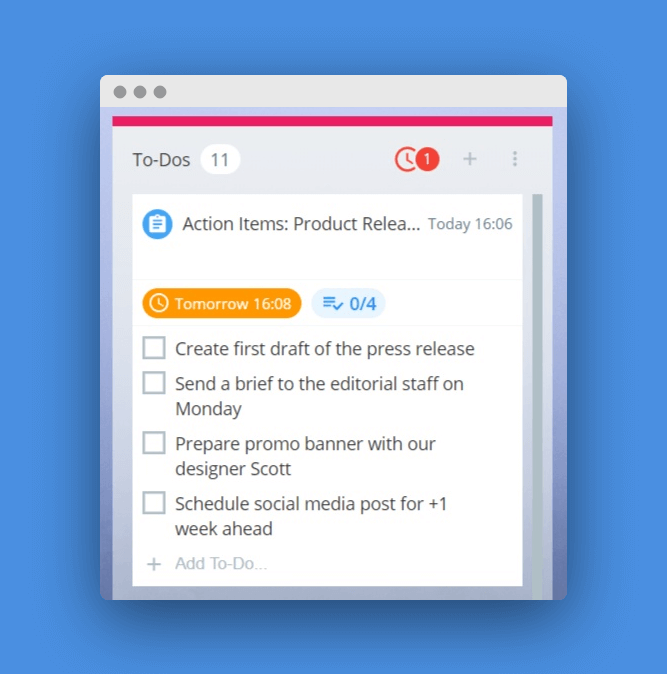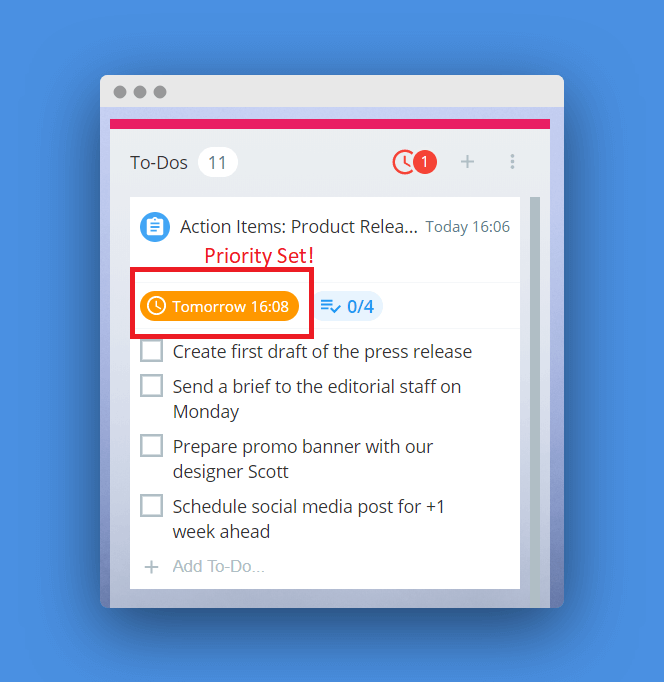What are Action Items and How to Define Them in 2019
In the world of management, to keep yourself and your business working as efficiently as possible, it is crucial that you understand what action items are and how you can best utilize them to your advantage.
Before you begin understanding how to implement these items into your email management system in an efficient manner, you would have to understand what an action item is first. Once you have a good idea of what an action item is, you can see how to use them to the advantage of your business best. After all, just about everyone knows what an action is.
What Is an Action Item?
In the realm of management, an action item is a specific task or action that needs to be taken care of, and they are usually what you would place on a to-do list or a calendar so that you can keep track of what needs to be done.
For instance, if you mark that a certain meeting for your business needs to happen later in the afternoon and you need to prepare for the meeting, that would be an action item. Understanding what an action item does is a fairly simple process. However, the problems come when you are not entirely sure of how to properly organize your to-do lists or schedules.
If there are too many action items on your to-do list, you or your employees might begin to feel overwhelmed and at a loss for what to do, which can lead to an overall loss of production. No manager wants this to happen.
With this being said, once you understand a little bit more about how to organize the action items of your business, you can rest assured that your business will be functioning at its best potential.
Tip #1) Being Clear and Concise
As you work on editing the action items on the to-do lists of your employees or the notes to yourself, you will need to take some extra care to make sure that you are not too verbose or too vague. If you are too vague, you or your employees won’t quite know what they are supposed to be doing.
If your employees do not speak up about this, it can end in disaster when your employees do the exact opposite of what you wanted them to do. On the other hand, if you are too verbose in what you want your employees to do, the employees could become confused, which has the same result in the end.
Nobody wants their employees fumbling around, not knowing what to do, which is why it is all the more important to edit what you say in your action items so that your employees understand exactly what you want them to do.

For example, if you only write nouns in your action items, there is a very good chance that there will be at least one employee who might not know what to do. This can create confusion within your business, which is never a good thing. It can also waste time, as your employee will have to ask around to get a better idea as to what you should do.
Thankfully, with a well-rounded task management program, you can easily tell your employees what needs to be done, in no uncertain terms. The best way to get this done is to start your action item with a verb so that your employees know exactly where to start with their daily tasks.
Tip #2) Adding Due Dates
Another issue that many employees might have with their action items is that they might not know just how urgent something really is. Unless that employee is in the loop about when your management needs things done, there is no reason that your employees would know when things need to be done, unless you add due dates to your action items.
Adding a due date to your action item can have so many benefits. Not only does this significantly increase the chances that your action item will actually get done by that due date, but it will also help employees, as they will know how quickly things need to be done.

This can drastically reduce the stress that both you and your employees experience with deadlines or lack thereof. With a reliable task management software, you will easily be able to add due dates to any action item that you need to, making everyone’s life just a little bit simpler.
In a way, adding due dates can help you out when your employee is not acting as responsibly as he or she should be. After all, when you have written down due dates, you can easily pull them back up and question why your employee was unable to meet the due dates.
This helps you keep a better grasp on the responsibility and reliability of your employees, which is crucial for any manager to know.
Tip #3) Adding Details
Of course, you don’t want to be too verbose in your descriptions of what needs to be done, as nobody wants to read paragraphs detailing how to do one simple task. However, you will want to include the most important details of the action item.
For instance, if a certain employee needs to get something done, you can specify what exactly needs to be done, and whom that employee is doing it for. An example of a great way to utilize details to your advantage is if an important partner of your business needs something done, you can mention that in the action item.
Adding this type of detail to an action item significantly increases the chances that the employee will put the item in higher regard, getting it done quickly and efficiently.
Adding important details to action items is also very important, as it prevents any sort of confusion concerning what needs to be done. Realizing that your employee has done nothing similar to what you thought you asked is disheartening, and it can be incredibly stressful when you are working against the clock.
By being even more specific about what needs to be done in your action item, you won’t have to worry when you send it to your employee’s to-do list, as your employee will surely know what needs to be done.
Resources: https://www.prosport-club.com/

